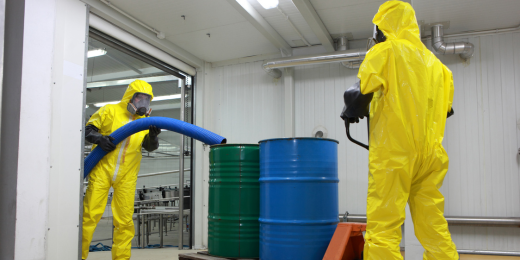The 5-Second Trick For Reclaim Waste
The Reclaim Waste PDFs
Table of ContentsReclaim Waste Fundamentals Explained3 Simple Techniques For Reclaim Waste9 Easy Facts About Reclaim Waste ExplainedReclaim Waste Fundamentals ExplainedThe Ultimate Guide To Reclaim Waste
Domestic sewer waste refers to the waste and items from a property septic tank. The appropriate management and disposal of residential sewage waste need fluid waste to be moved to a sewage treatment plant where the appropriate approaches and equipment are applied to purify and dispose of waste.
Business waste typically consists of possible threats, such as flammable products or a mix of fluid and strong waste items, and calls for a more sophisticated and in-depth disposal procedure. The disposal of commercial waste usually includes the purification of waste prior to transport to make certain safe and appropriate disposal. Industrial waste is produced from results and drainage of industrial procedures and manufacturing.
This type of waste can not utilize the very same sewer monitoring transport or procedures as septic or business fluids. The hazardous waste administration process needs the inspection and testing of liquid waste before it undergoes the disposal process (liquid waste disposal). Drainage waste is the fluid waste that comes from overflow and excess stormwater in highly populated locations or cities
Overflow waste can cause contamination and flooding if not taken care of effectively. Making sure proper waste monitoring can protect against catastrophes and lower ecological harm.
Reclaim Waste Fundamentals Explained
Contact PROS Solutions today to discover our waste monitoring and disposal solutions and the proper methods to care for the fluid waste you produce.
(http://go.bubbl.us/e67627/7593?/Reclaim-Waste)This supposed 'wastewater' is not just an important source however, after therapy, will certainly be launched to our land, rivers or the ocean. Utilized water from toilets, showers, bathrooms, cooking area sinks, laundries and industrial processes is recognized as wastewater.

water utilized to cool down machinery or clean plant and tools). Stormwater, a form of wastewater, is overflow that flows from agricultural and metropolitan locations such as roofings, parks, yards, roads, courses and rain gutters right into stormwater drains pipes, after rain. Stormwater moves untreated directly to local creeks or rivers, at some point getting to the ocean.
All About Reclaim Waste
In Queensland, the majority of wastewater is dealt with at sewer therapy plants. Wastewater is delivered from residential or commercial websites through a system of drains and pump stations, recognized as sewerage reticulation, to a sewer therapy plant.
The Division Learn More Here of Natural Resources encourages city governments regarding managing, operating and keeping sewage systems and therapy plants. In unsewered areas, local governments may need homeowners to mount individual or house sewage therapy systems to deal with residential wastewater from commodes, cooking areas, restrooms and laundries. The Department of Natural Resources authorizes using home systems when they are proven to be efficient.
In some new neighborhoods, therapy of some stormwater to remove trash, sand and crushed rock has begun using gross contaminant catches. Wastewater therapy occurs in four phases: Eliminates strong issue.
Wastewater then flows into huge storage tanks where solids clear up and are removed as sludge. Grease and residue are skimmed from the surface area. Uses small living microorganisms referred to as micro-organisms to break down and eliminate staying liquified wastes and great particles. Micro-organisms and wastes are incorporated in the sludge. Removes nitrogen and phosphorus nutrients that could cause algal flowers in our rivers and intimidate marine life.
Some Known Details About Reclaim Waste
Nutrient removal is not available at all sewage treatment plants since it calls for expensive specialised equipment. Clear fluid effluent generated after treatment might still have disease-causing micro-organisms - industrial wastewater treatment.

This normally suggests wastewater has actually to be treated or impurities removed prior to it can be discharged to rivers. The majority of wastewater streams right into the sewerage system. Under the Act, regional governments administer authorizations and licences for environmentally pertinent activities (Periods) including wastewater releases that could have a regional impact. The department provides approvals and licences to ERAs entailing wastewater releases that may have a regional or statewide impact.
How Reclaim Waste can Save You Time, Stress, and Money.
Otherwise, samples are considered research laboratory analysis. Often numerous tests are required to develop the levels of each of the different contaminants such as oils, hefty metals and pesticides in water. Monitoring supplies valid details about water quality and can confirm that licence conditions are being satisfied. The details obtained through surveillance provides the basis for making water high quality decisions.